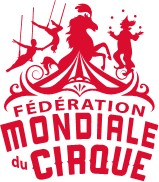Circus arts has been registered in the national inventory of Intangible Cultural Heritage of UNESCO in Germany.
The German circus community demonstrated a wonderful model of cooperation,and collaboration between the different stakeholders. Due to their long and hard work Germany reached that important recognition following in Europe Holland, Hungary, Finland,.Wallonie and Sweden.
Great success and an example to follow!”.
press release – 03/15/2023
Circus is culture! Finally also recognized in Germany.
The “circus as an independent form of performing arts” was included in the nationwide register of intangible cultural heritage today. That was decided by the German UNESCO Commission and the Conference of Ministers of Education.
The German circus associations had submitted the corresponding application in close cooperation. This new association network includes the European Circus Association (ECA), the Association of German Circus Companies (VDCU) and the Professional Association of Animal Teachers, the Federal Association of Contemporary Circus (BUZZ), the BAG Zirkuspädagogik, the association Zirkus-macht-stark and social Society of Circus Friends. Together they managed last year to have the federal state of North Rhine-Westphalia enter the circus in its state inventory of intangible cultural heritage and at the same time nominate it for inclusion in the nationwide directory (cf. www.mkw.nrw/kultur/arbeitsfelder/immaterielles- heritage Site). With today’s decision, the circus in all its forms is now part of the intangible cultural heritage nationwide.
In their application, the associations emphasize that the circus has constantly changed over the course of its 250-year history. Different forms have developed that exist in parallel and in mutual exchange with each other today. The Circus Krone building in Munich is the last circus building in Germany. All other traditional circuses tour with tents and wagons and play at different locations with different mixtures of acrobatics, animal performances and clowning. In smaller companies, a single family sometimes runs the entire program, in larger ones the ensemble is multinational and multicultural.
Starting in France, contemporary circus has developed internationally in recent years. It uses circus techniques for thematic productions and places more emphasis on a theatrical work of art than on individual performances. In addition, the circus is a popular medium of educational work. Countless children’s circus projects spread the idea of the circus and use circus techniques for educational purposes. Circus arts can also be found in various related cultural forms, such as variety theatres, dinner shows or street performers. What all forms have in common is that, in contrast to other performing arts, it is not primarily about the interpretation of a preconceived work, but rather about the direct, artistic presentation of unusual skills and techniques.
“We are very happy that the circus has finally been recognized as a cultural heritage in Germany,” says Helmut Grosscurth, spokesman for the network of circus associations in Germany. “The best opportunity to celebrate this recognition is World Circus Day on April 15, 2023, e.g. at a gala that will take place at Circus Mondeo in Berlin.”

